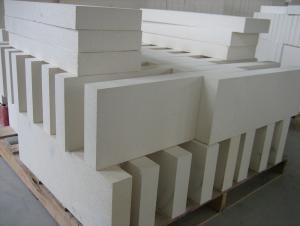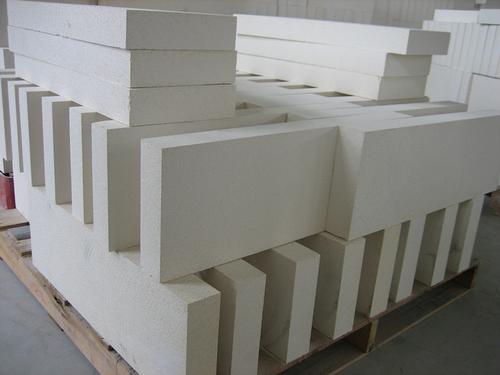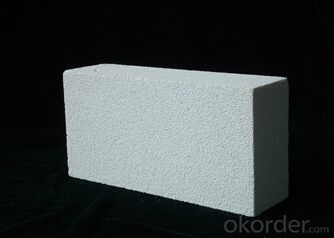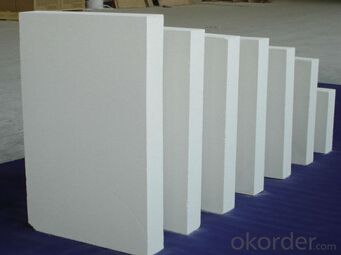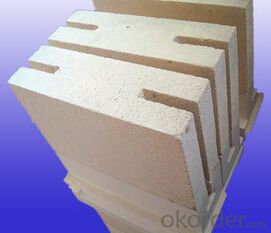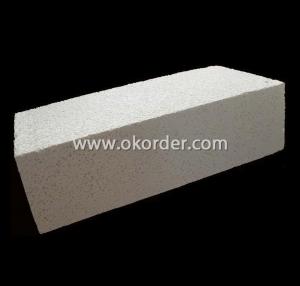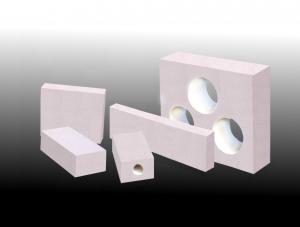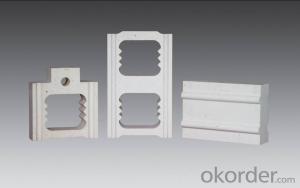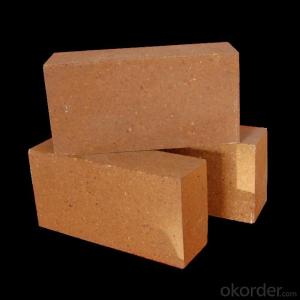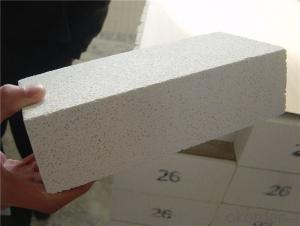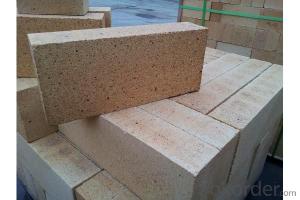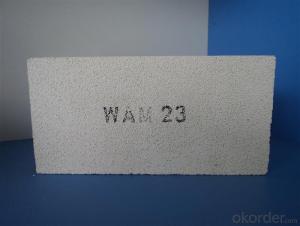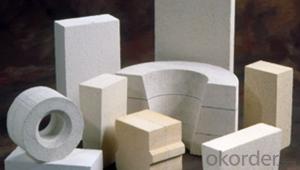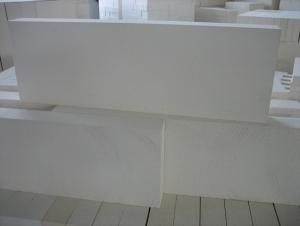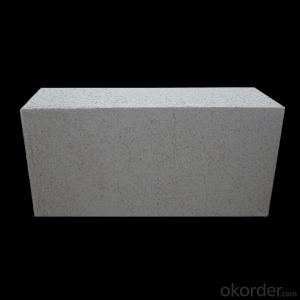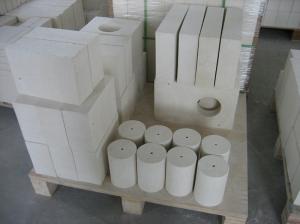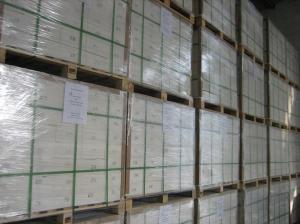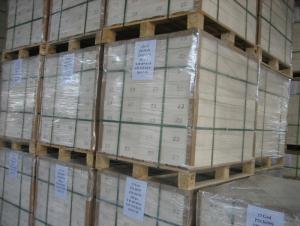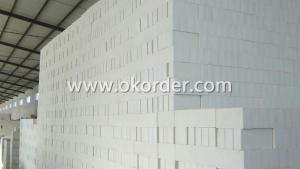Refractory Mullite Insulating Refractory Brick JM 32
- Loading Port:
- Shanghai
- Payment Terms:
- TT OR LC
- Min Order Qty:
- 20 m.t.
- Supply Capability:
- 20 m.t./month
OKorder Service Pledge
OKorder Financial Service
You Might Also Like
General Information
CMAX insulating firebricks are classified under temperature between 1300℃ to 1700℃, manufactured from high purity alumina clay.
1. Lower content of iron, alkaline and impurities, good high temperature properties.
2. Homogeneous structure, light weight, energy saving because lower heat storage in the furnace during cooling cycles.
3. High strength, good thermal shock resistance under high temperature.
4. Precise sizes due to grinding and shaping after sintering, which meets the requirement of construction.
5. Max service temp: Up to 1730C (3160F)
Feature
Light weight and low thermal conductivity
Low heat storage
Low iron and impurities
High thermal shock resistance
Application of Insulating brick
Metallurgical Industry: blast furnace, hot blast furnace, heating furnace, etc..
Petrochemical Industry: ethylene cracking furnace, hydrogen furnace, the main furnace, heating furnace, etc..
Ceramic industry: roller kiln, kiln, etc..
Glass industry: glass furnace regenerator, etc.
Carbon industry: carbon furnace, etc..
Aluminum electrolysis industry: aluminum reduction cell, etc.
Other industries: tunnel kiln, shuttle kiln, etc.
Advantages of heat insulation brick
Low thermal conductivity: many air holes will bring good thermal insulation effect, energy saving.
High crushing strength: high crushing strength, volume stability.
Low heat storage: small heat storage, absorb more heat, energy-saving effect is obvious.
Technical Data
ITEM | GJM30 | GJM28 | GJM26 | GJM23 |
Classification Temperature, ℉/℃ | 3000/1650 | 2800/1540 | 2600/1430 | 2300/1260 |
Bulk Density,g/cm³ | ≤1.0 | ≤0.9 | ≤0.8 | ≥0.5 |
Reheating Linear Change, % | ≤0.9 (1550℃,12 h) | ≤0.8 (1510℃,12 h) | ≤0.7 (1410℃,12 h) | ≤0.5 (1230℃,12 h) |
Al2O3 Content, % | ≥75 | ≥65 | ≥55 | ≥45 |
Fe2O3 Content, % | ≤0.5 | ≤0.6 | ≤0.7 | ≤1.0 |
Thermal Conductivity: | ||||
800℃, w/m.k | ≤0.39 | ≤0.37 | ≤0.35 | ≤0.18 |
1000℃, w/m.k | ≤0.43 | ≤0.41 | ≤0.39 | ≤0.20 |
1200℃, w/m.k | ≤0.48 | ≤0.46 | ≤0.43 | --- |
Insulating brick
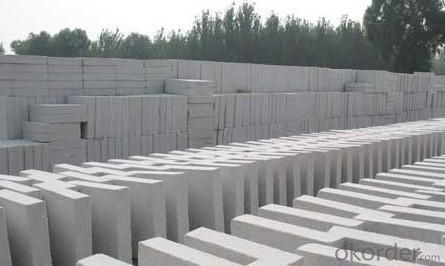
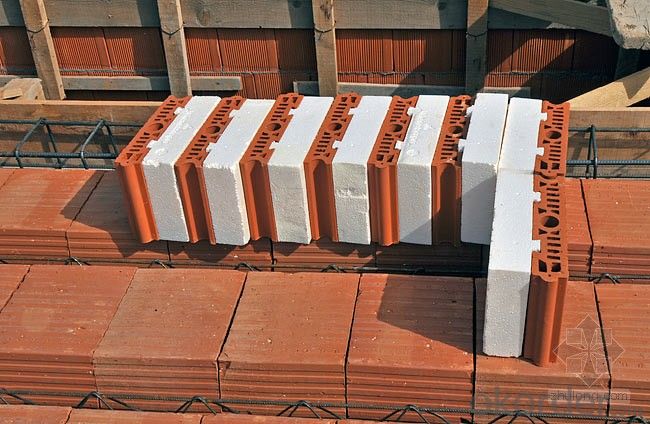
Common problem solution
1. What products do you have?
We have all kinds of refractory bricks, refractory casting materials, mortar, cement, ceramic fiber products, etc..
Or you can browse our products to choose what you need.
2. How to control product quality?
With strict quality control system throughout the material selection and production process, we have the quality of refractory materials and ceramic fiber products to meet customer requirements.
From the selection of raw materials, the quality of our control to start. The quality of the raw materials required for each batch of products in the use of the front line test. In the production process, through the quality control of workers, and then to each piece of classification, and through quality supervision and inspection.
3. Could you give me a brief introduction to the application of your product?
My Company is mainly engaged in steel, cement, glass, ceramics, petrochemical, electric power and other industries.
4. If I need you, what kind of information do you need?
In order to select the right products, we will provide us with information, such as the United States, technical data, order quantity, product applications, etc..
If you have any questions, please contact us.
- Q: Are insulating fire bricks resistant to insect infestation?
- No, insulating fire bricks are not resistant to insect infestation.
- Q: Do insulating fire bricks have a high thermal stability?
- Insulating fire bricks possess a remarkable level of thermal stability, as they are specifically engineered to endure elevated temperatures without degradation or the loss of their insulating properties. Crafted from top-notch refractory materials capable of withstanding extreme temperatures, these bricks are exceptionally well-suited for situations where thermal stability is of utmost importance. Their low thermal conductivity enables them to effectively trap and retain heat, thus preventing its escape. Consequently, they are particularly valuable in environments necessitating consistent temperatures, such as furnaces, kilns, and various high-temperature industrial processes. In summary, insulating fire bricks are renowned for their exceptional thermal stability, rendering them a dependable option for applications demanding insulation and safeguarding against high temperatures.
- Q: Can insulating fire bricks be used in boilers for residential heating?
- Insulating fire bricks can indeed be utilized for residential heating boilers. These bricks are specifically engineered to endure elevated temperatures and offer superior thermal insulation properties. Their utilization in boiler and furnace construction is widespread due to their remarkable heat retention capabilities and ability to prevent heat dissipation. Consequently, the incorporation of these bricks aids in enhancing the energy efficiency of the boiler system by minimizing heat transfer to the surroundings, resulting in more effective heating and reduced energy consumption. Furthermore, the durability and resistance to thermal shock exhibited by insulating fire bricks make them ideal for withstanding the intense temperatures and rapid temperature fluctuations typically encountered in boilers. Consequently, their implementation in residential heating boilers serves to enhance both performance and energy efficiency.
- Q: Can insulating fire bricks be used in high-temperature insulation for aerospace applications?
- Yes, insulating fire bricks can be used in high-temperature insulation for aerospace applications. These bricks are designed to withstand extremely high temperatures and provide excellent insulation properties, making them suitable for use in aerospace applications where thermal protection is crucial.
- Q: Are insulating fire bricks resistant to acid or alkali attacks?
- Insulating fire bricks are generally resistant to acid attacks but may not be highly resistant to alkali attacks.
- Q: What is the density of insulating fire bricks?
- Insulating fire bricks usually have a density ranging from 0.6 to 1.5 grams per cubic centimeter (g/cm³), but this can vary depending on their specific composition and manufacturing process. These bricks are purposely made with lower density than regular fire bricks, enabling them to possess superior insulating qualities. The reduced density aids in minimizing heat transfer and enhancing energy efficiency in diverse applications like furnaces, kilns, and ovens.
- Q: Can insulating fire bricks be used for insulation in petrochemical plants?
- Yes, insulating fire bricks can be used for insulation in petrochemical plants. Insulating fire bricks are known for their excellent thermal properties, including low thermal conductivity and high resistance to heat transfer. These properties make them suitable for use in high-temperature environments such as petrochemical plants, where insulation is crucial to prevent heat loss and maintain optimal operating conditions. Additionally, insulating fire bricks are lightweight and have good mechanical strength, making them easy to install and durable in industrial settings. They are also resistant to chemical corrosion, which is essential for petrochemical plants that handle various corrosive substances. Therefore, insulating fire bricks can effectively provide insulation and contribute to energy efficiency and safety in petrochemical plants.
- Q: Can insulating fire bricks be used in heat exchangers?
- Yes, insulating fire bricks can be used in heat exchangers. These bricks are designed to have excellent thermal insulation properties, making them suitable for applications where heat needs to be contained or transferred efficiently. Heat exchangers rely on the efficient transfer of thermal energy, and insulating fire bricks can help in reducing heat loss or gain in these systems, improving their overall efficiency.
- Q: Is it possible to cut insulating fire bricks to fit custom shapes?
- Cutting insulating fire bricks to fit custom shapes is indeed possible. These bricks, composed of lightweight materials like ceramic fiber, can be easily cut or shaped using a range of tools. Cutting methods typically involve a saw, knife, or even a hot wire cutter. However, it is crucial to prioritize safety precautions and wear protective gear while undertaking this task. Dust and sharp edges may be produced during the cutting process. By employing suitable tools and techniques, it becomes achievable to tailor insulating fire bricks to any desired custom shape.
- Q: Can insulating fire bricks be used for insulation in chemical plants?
- Yes, insulating fire bricks can be used for insulation in chemical plants. These bricks are designed to withstand high temperatures and provide excellent thermal insulation, making them suitable for insulating equipment, furnaces, and other structures in chemical plants where heat management is crucial.
Send your message to us
Refractory Mullite Insulating Refractory Brick JM 32
- Loading Port:
- Shanghai
- Payment Terms:
- TT OR LC
- Min Order Qty:
- 20 m.t.
- Supply Capability:
- 20 m.t./month
OKorder Service Pledge
OKorder Financial Service
Similar products
Hot products
Hot Searches
Related keywords
